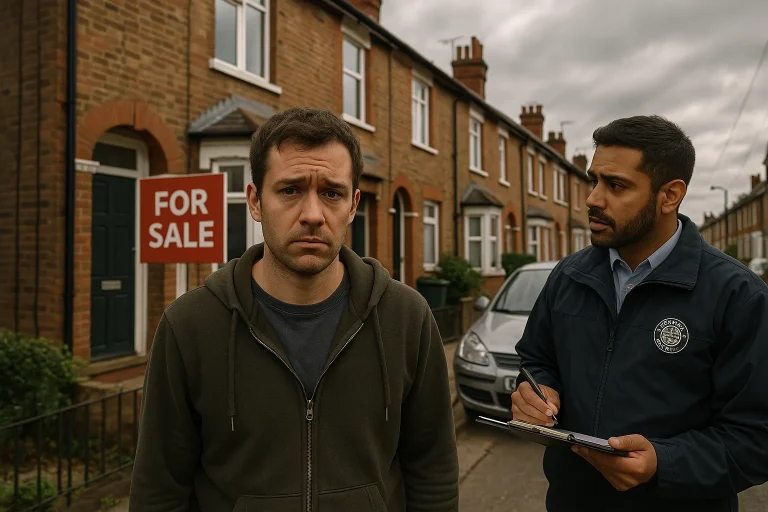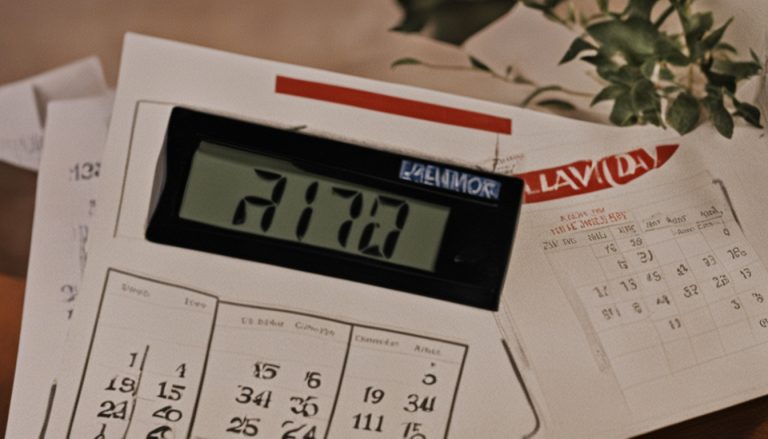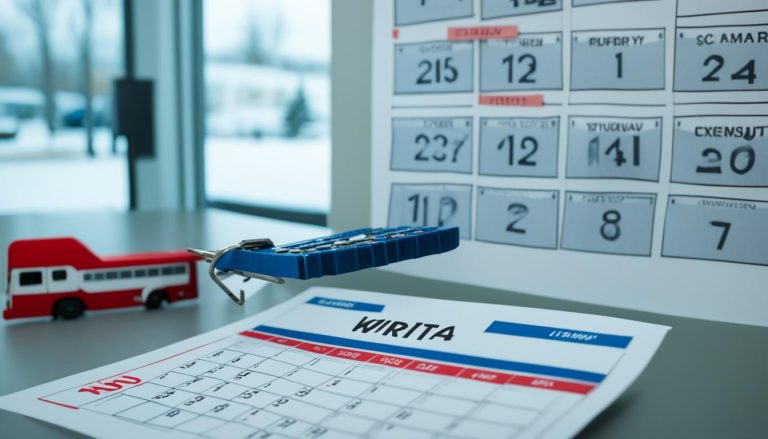As a landlord or tenant in the UK, it’s crucial to understand the responsibilities when it comes to painting and decorating the rental property. The law establishes the main obligations of both parties, but there can be some grey areas and room for negotiation. This guide will explore the painting and decorating responsibilities of landlords and tenants in the UK, providing clarity on the rights and duties of each party.
Understanding Landlord and Tenant Responsibilities
When it comes to decorating obligations in UK rental and painting rules in UK tenancy agreements, it’s crucial for both landlords and tenants to understand their respective responsibilities. One key aspect is distinguishing between what constitutes a repair and what should be considered an improvement.
What Counts as a Repair vs an Improvement?
Landlords are responsible for repairing the main structure of the UK landlord repainting obligations, including the walls, windows, roof, and the supply of gas, water, electricity, and sanitation. They must also maintain the common areas and ensure the property is safe for the tenants to live in. Any issues with the property’s core functionality, such as fixing a leaky pipe or replacing a broken window, would fall under the landlord’s UK tenant repainting obligations.
However, cosmetic changes or upgrades that go beyond basic repairs are typically considered improvements. This could include repainting the walls in a different colour, installing new flooring, or upgrading the kitchen appliances. In these cases, the landlord-tenant painting dispute UK would need to obtain the landlord’s permission before making such changes.
Disability Adaptations and Reasonable Adjustments
If a tenant has a disability, they may be entitled to make reasonable adjustments to the property to accommodate their needs. This could include installing grab rails, widening doorways, or making other accessibility-related modifications. In such cases, the landlord has a duty to allow these changes and may even be required to contribute towards the cost, as long as the adjustments are deemed reasonable and necessary.

Landlord’s Painting and Decorating Obligations
When it comes to UK rental property painting guidelines, landlords have specific obligations to uphold. While there are no definitive rules on how often a private landlord should redecorate, the leading landlord tenant responsibilities deposit protection schemes suggest repainting every 3 to 5 years as a general guideline.
Frequency of Repainting and Redecorating
Landlords may need to decorate more frequently if a wall requires plastering or repainting after addressing a property maintenance obligations such as fixing a leak or damp issue. The exact timeline can vary based on the condition of the rental property and the terms outlined in the tenancy agreement.
Repainting After Repairs or Damp Issues
When a landlord carries out repairs or addresses painting rental property concerns like damp, they are typically responsible for repainting the affected areas to restore the property to its original condition. This ensures the rental home remains in a livable state for the tenant.

Tenant’s Rights and Obligations for Painting
As a tenant in the UK, your ability to paint or redecorate the rental property is often governed by the tenancy agreement clauses. It is typical for landlords to require you to obtain their permission before making any significant changes, including painting the walls or altering the décor.
Obtaining Landlord’s Permission for Painting
The rental laws UK stipulate that tenants should seek their landlord’s approval before painting or redecorating the rental property. This is usually outlined in the tenancy agreement, which serves as a legally binding contract between you and your landlord. Failing to obtain permission could result in deposit deductions or disputes at the end of the tenancy.
Rules for Council and Housing Association Tenants
Interestingly, council and housing association tenants often have more flexibility when it comes to painting and decorating their homes. In many cases, they may be able to make cosmetic changes without seeking prior approval from their landlord, as long as they agree to return the property to its original condition at the end of tenancy repairs. This increased freedom is often due to the nature of social housing and the focus on enabling tenants to personalise their living spaces.
Ultimately, as a tenant, it’s essential to review the fair wear and tear guidelines outlined in your tenancy agreement and communicate openly with your landlord about any desired changes to the property’s appearance. By understanding your rights and obligations, you can ensure a smooth and amicable rental experience.
Replacing Fixtures, Furniture, and Carpets
As a landlord, you are responsible for repairing or replacing any fixtures, furniture, or carpets that you provided as part of the rental property. This includes essential items such as cookers, fridge freezers, washing machines, beds, and sofas. These furnishings and appliances are considered part of the landlord painting responsibilities to maintain the property in a livable condition for your tenants.
Wear and Tear vs Damage
It’s important to differentiate between normal wear and tear and actual damage caused by the tenant. While you are expected to replace items that have reached the end of their lifespan due to regular use, you can hold the tenant accountable for any deliberate or negligent damage to the property. This may include what repairs are tenants responsible for, such as stains, burns, or broken parts.
Guidance on Replacement Timelines
There is no strict rule on how often a landlord must replace items in a rental property, but industry guidelines suggest that major appliances like cookers and fridges should be replaced every 7-10 years, while sofas and carpets may need replacing every 5-7 years. However, the frequency of how often landlords have to paint UK can vary depending on the condition of the property and the length of the tenancy. As a landlord, it’s essential to maintain the property to a high standard and monitor the wear and tear on fixtures and furnishings.

Who Is Responsible for Painting Landlord or Tenant UK?
While landlords are generally not obligated to carry out improvements to the rental property, they may choose to do so for various landlord’s reasons for voluntary improvements. This could include improving the property to attract new tenants or prepare it for sale, or if the local council has ordered major improvements due to health and safety concerns.
Landlord’s Reasons for Voluntary Improvements
Landlords may decide to make voluntary improvements to their rental property for several reasons. One common motivation is to attract new tenants by enhancing the property’s appeal and competitiveness in the rental market. Landlords may also choose to prepare the property for sale, updating the décor and condition to increase its market value.
Additionally, local authorities may order major improvements to the property due to health and safety concerns, such as addressing structural issues or updating outdated electrical and plumbing systems. In such cases, landlords are required to comply with these directives to ensure the property meets necessary standards.
Negotiating Improvements with the Landlord
Tenants who would like to see improvements made to their rental property can negotiate with the landlord to discuss potential upgrades. This could involve proposing specific changes, such as repainting the walls or upgrading the kitchen appliances, and reaching an agreement on how the costs and responsibilities will be shared.
Effective negotiation with the landlord requires clear communication, a willingness to compromise, and a good understanding of the landlord’s and tenant’s respective rights and obligations. By working collaboratively, tenants and landlords can often find mutually beneficial solutions that improve the rental property to the satisfaction of both parties.
Making Cosmetic Changes as a Tenant
Although tenants generally need their landlord’s permission to make significant changes to the rental property, there are still ways to personalise the space and make it feel more like a home. One option is to paint the walls in a colour of your choice, as long as you agree to repaint them in the original colour when you move out. You can also use temporary wallpaper that can be easily removed.
Painting Walls and Using Temporary Wallpaper
Painting the walls of your rental property can instantly transform the look and feel of the space. As a tenant, you may want to consider adding a fresh coat of paint in a colour that suits your personal style. Just be sure to discuss this with your landlord and agree on the terms, such as repainting the walls in the original colour when you vacate the property.
Another option is to use temporary wallpaper. These types of wallpapers are designed to be easily applied and removed without causing any damage to the walls. This can be a great way to add a unique touch to your rental without the need for permanent changes.
Adding Tiles, Rugs, and Small Decor Elements
Beyond painting and wallpapering, you can also add tiles, rugs, and other small decor elements to personalise your rental. These types of cosmetic changes are generally more acceptable, as they can be easily removed or replaced when you move out.
Consider adding a few strategically placed tiles, such as in the kitchen or bathroom, to create a fresh, updated look. Layering rugs and adding small decorative pieces, like wall art or potted plants, can also help to make the space feel more like your own.
Furniture and Storage Solutions
When it comes to furniture and storage solutions, tenants have more flexibility to make changes that suit their needs. You can bring in your own furniture, such as bookcases, shelves, or even a statement piece like a vintage armchair, to add your personal touch to the rental.
Additionally, investing in smart storage solutions, such as multi-purpose pieces or hidden storage, can help you maximise the available space and keep the rental property tidy and organised.
Establishing Responsibilities in the Tenancy Agreement
The tenancy agreement is the key document that outlines the responsibilities of both the landlord and the tenant when it comes to the rental property. It’s crucial for both parties to carefully review and understand the clauses related to painting, decorating, and maintenance.
The tenancy agreement clauses should clearly establish the responsibilities in the tenancy agreement, ensuring that both the landlord and the tenant are aware of their obligations. This can include details on the frequency of repainting, who is responsible for damages, and the process for obtaining approval for any decorative changes.
By thoroughly understanding the tenancy agreement clauses and the established responsibilities in the tenancy agreement, both the landlord and the tenant can avoid misunderstandings and ensure a smooth and harmonious rental experience.
Conclusion
In summary, the responsibility for painting and decorating a rental property in the UK is a shared duty between the landlord and the tenant, with specific obligations and rights for each party. Landlords are typically responsible for maintaining the property’s structure and addressing any major issues, while tenants may have more flexibility to make cosmetic changes, as long as they obtain the landlord’s permission and agree to restore the property to its original condition at the end of the tenancy.
The tenancy agreement plays a crucial role in establishing the landlord’s painting responsibilities and the tenant’s painting responsibilities. It’s essential for both parties to carefully review and understand the clauses related to decorating obligations, painting rules, and property maintenance. This helps to avoid any disputes or misunderstandings regarding landlord-tenant painting disputes and end-of-tenancy repairs.
Whether you’re a landlord considering voluntary improvements or a tenant wanting to make cosmetic changes, it’s important to follow the guidelines and negotiate any changes with the other party. By working together and understanding their respective rights and obligations, landlords and tenants can ensure a smooth and harmonious rental experience, where the property is well-maintained and the tenant’s needs are met.
FAQ
What if the tenant needs to make disability adaptations or reasonable adjustments to the rental property?
Tenants with disabilities may have the right to make reasonable adjustments to the rental property to accommodate their needs. In these cases, the landlord may be required to allow the adaptations or even contribute towards the costs, as long as the changes are deemed necessary and reasonable.
What are the rules around replacing fixtures, furniture, and carpets in a rental property?
Landlords are responsible for repairing or replacing any fixtures, furniture, or carpets that they provided as part of the rental property. This includes items such as cookers, fridge freezers, washing machines, beds, and sofas. Tenants are generally responsible for any damage caused to these items, but the landlord must cover the cost of fair wear and tear.
When can a landlord make voluntary improvements to the rental property?
Although landlords are generally not obligated to carry out improvements to the rental property, they may choose to do so for various reasons. This could include improving the property to attract new tenants or prepare it for sale, or if the local council has ordered major improvements due to health and safety concerns. Tenants may be able to negotiate improvements with the landlord, especially if the changes would benefit them.
What cosmetic changes can a tenant make to the rental property?
While tenants generally need their landlord’s permission to make significant changes to the rental property, there are still ways to personalise the space and make it feel more like a home. One option is to paint the walls in a colour of your choice, as long as you agree to repaint them in the original colour when you move out. You can also use temporary wallpaper that can be easily removed, add tiles or rugs, and use furniture and storage solutions to enhance the space.
How are the responsibilities for painting and decorating outlined in the tenancy agreement?
The tenancy agreement is the key document that outlines the responsibilities of both the landlord and the tenant when it comes to the rental property. It’s important for both parties to carefully review and understand the clauses related to painting, decorating, and maintenance.






